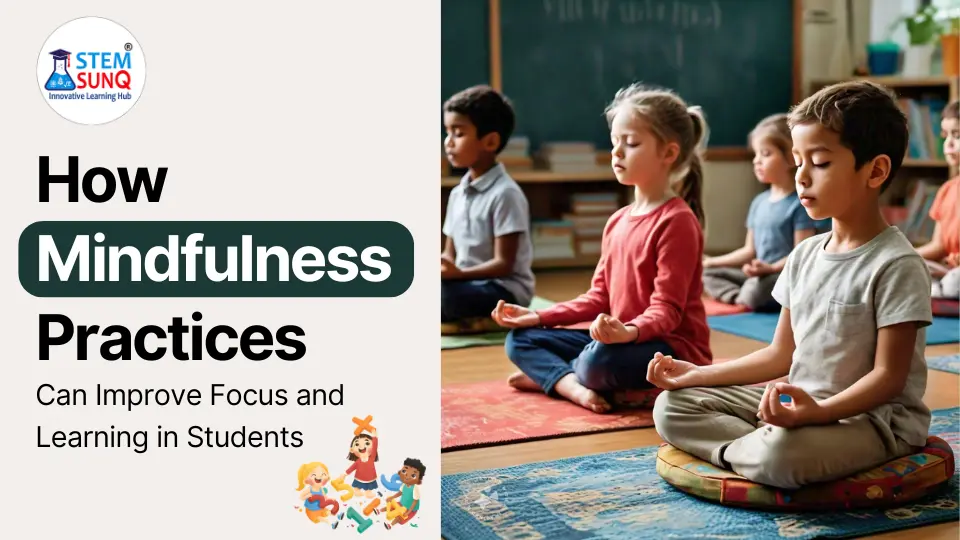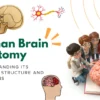
Table of Contents
In a world full of distractions, students frequently struggle to concentrate in the classroom and during study sessions.
With the continual buzz of technology, social media, and other external demands, it’s getting more difficult for kids to concentrate and reach their full academic potential.
But what if there was a simple, yet effective approach to help children increase their focus and learning? Enter mindfulness, a discipline that has gained popularity for soothing the mind, lowering stress, and sharpening concentration.
This blog post looks at how mindfulness activities might improve students’ focus and learning.
Also Read: The Role of Parent Involvement in Supporting STEM Education at Home
Understanding Mindfulness
Mindfulness is the practice of remaining fully present in the moment, aware of where we are and what we are doing, without becoming heavily reactive or overwhelmed by what is going on around us. It means paying attention to thoughts, emotions, and sensations without passing judgment.
Students can focus on their breathing, tune into their emotions, or simply be aware of their surroundings.
According to research, mindfulness has a good impact on the brain. A study published in the journal Psychological Science found that mindfulness can improve attention span, working memory, and cognitive flexibility.
These benefits are critical for kids because they immediately improve focus and learning results.
How Mindfulness Improves Focus
One of the key advantages of mindfulness is its capacity to increase focus. When students practice mindfulness, they educate their minds to focus on the present moment.
This allows them to block out distractions and focus on the task at hand, such as listening to a teacher, studying for an exam, or working on a project.
Mindfulness techniques, such as deep breathing or body scans, can help pupils relax and focus their attention.
Students can bring their thoughts back to the present now by focusing on their breath or different parts of their body, which reduces their tendency to drift off or become distracted.
Mindfulness and Stress Reduction
Another key advantage of mindfulness is its ability to reduce stress. Students today experience a lot of pressure, ranging from academic requirements to social expectations.
This stress might cause anxiety, reducing their capacity to focus and learn.
Mindfulness methods, such as meditation and guided visualization, have been shown to reduce stress.
According to a study by the American Psychological Association, mindfulness can reduce symptoms of anxiety and depression in students, leading to a calmer, more focused mind.
When kids are less worried, they are more likely to focus on their studies and absorb knowledge more effectively.
Incorporating Mindfulness in the Classroom
Given the benefits, more schools are implementing mindfulness activities in the classroom.
Simple exercises such as beginning each day with a few minutes of deep breathing, practicing mindful listening, or even short meditation sessions can have a significant impact on how students approach learning.
Teachers may motivate students to use mindfulness practices throughout tests and exams. For example, taking a few deep breaths before beginning a test can assist to relax nerves and increase concentration.
Over time, these tiny habits can add up to greater focus, academic success, and a more pleasant attitude about learning.
Practical Tips for Students to Practice Mindfulness
Mindfulness does not take much time or special equipment, making it simple for students to include in their regular activities.
Here are some simple mindfulness practices that students can try:
- Mindful Breathing: Spend a few minutes a day focusing on your breath. Consider the sensation of air entering and exiting your body. If your thoughts begin to wander, softly redirect your attention back to your breathing.
- Body Scan: Take a moment to mentally scan your body from head to toe, noticing any areas of tension or discomfort. This practice can help you become more aware of your body and reduce stress.
- Mindful Listening: When listening to someone, concentrate solely on their words and avoid thinking about your response. This can help you enhance your communication skills and stay engaged in talks.
- Mindful Walking: While walking, pay attention to how your feet feel on the ground, how your legs move, and your surroundings. This can help you clear your mind and relieve stress.
- Gratitude Journaling: Every day, write three things you are grateful for. This technique can help you shift the focus from what’s wrong to what’s going right in your life, improving your attitude and motivation.
Conclusion
Incorporating mindfulness activities into everyday routines can significantly improve pupils’ capacity to focus and study.
Mindfulness can improve learning outcomes and overall well-being by allowing pupils to be present, reduce stress, and improve their attention spans.
Students can take charge of their focus and make the most of their education by using easy breathing exercises, meditation, or attentive listening techniques.
As parents, instructors, and students, it’s worth investigating these techniques and enjoying the benefits they provide in today’s demanding environment.






